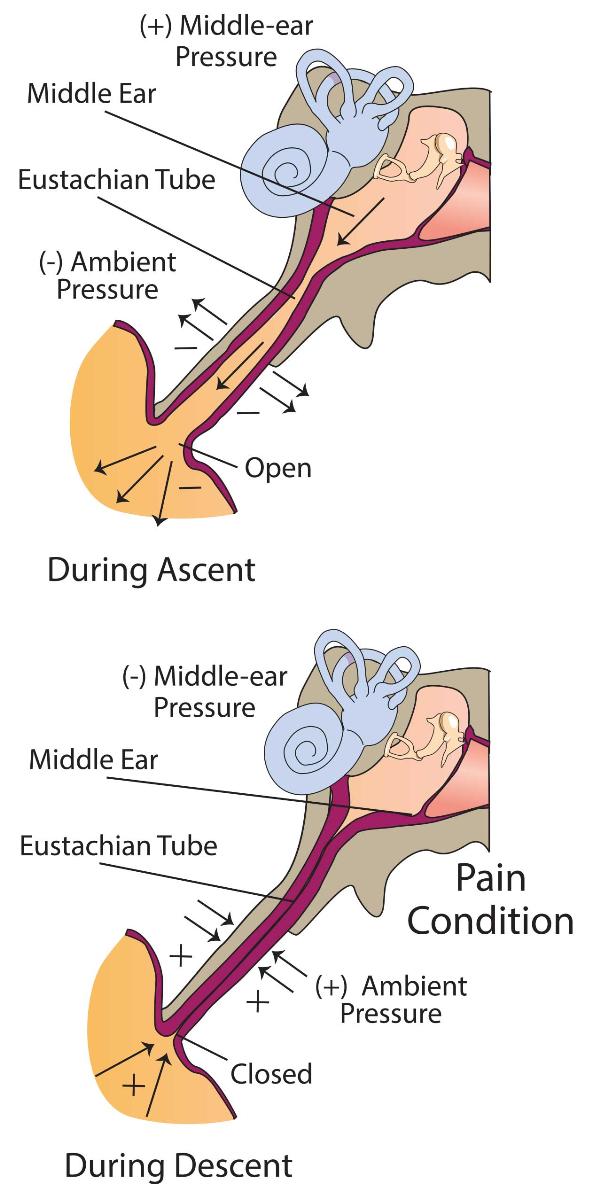Anatomy (simplified)
Nasal cavity <--- Eustachian tube ---> Middle-ear <--- Eardrum ---> Outer-ear
Descend
The pressure fom the outer-ear and the nasal cavity gets higher. But the pressure within the middle-ear stays the same, cause it’s isolated by the eardrum and the closed eustachian tube. The eustachian tube is closed based on the positive ambient pressure squeezing it. You have to actively equalize the pressure (e.g. valsalva maneuver). This opens the eustachian tube for a short time. Every few meter deeper you have to equalize again to prevent your eardrums from damage.
Ascend
The pressure fom the outer-ear and the nasal cavity gets lower. The pressure in the middle-ear gets lower as well, cause the eustachian tube opens up based on the negative ambient pressure on it. This means that you don’t have to actively equalize the pressure on the way up.

Image from world.dan.org
PS: The same is happening with the mask. While descending the higher outside pressure presses the mask against your face (mask squeeze) and you actively have to slightly exhale gas through your nose to equalize the pressure difference. While ascending the higher inside pressure gets equalizes automatically as gas leaves through the side of your mask.
